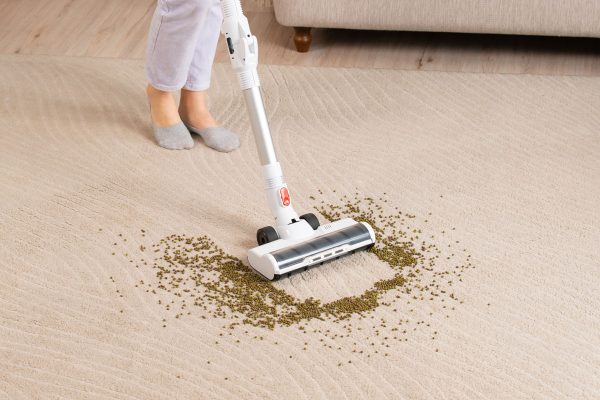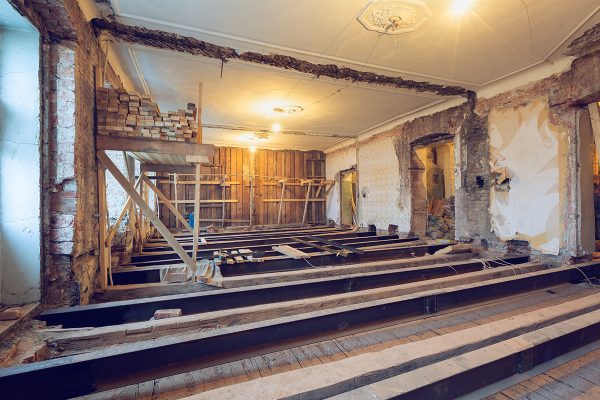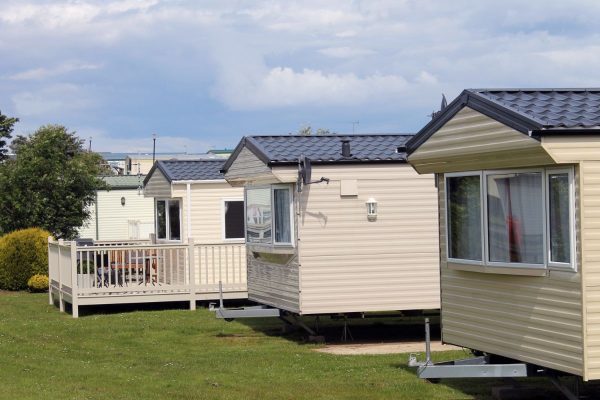A bouncy laminate floor is not aesthetically pleasing or comfortable and in many instances is a sign that your floor wasn't fixed properly. To learn more, we have asked home decor experts to explain further, here is their reply.
While laminate floor bouncing for a few months after installation is to be expected, any further bounciness of your laminate floor afterward indicates a problem.
Water damage, temperature changes, damaged floor joists, uneven subfloor, and improper installation are a number of possible reasons why your laminate floor is bouncy.
Read on to find out why your laminate floor is bouncy and what can be done to have that sturdy solid feeling underneath your feet again.

Should Your Laminate Floor Be Bouncy?
Laminate floors are designed to mimic hardwood or stone flooring. They ought to thus lay flat and solid beneath your feet.
While a little bit of bounciness is expected for a few months after installation or during hot summer months, your laminate floor should ordinarily not bounce.
Reasons Why Your Laminate Floor Feels Bouncy
The singular reason that your laminate floor feels bouncy is that there's substantial space where there shouldn't be: either between the layers of the laminate flooring itself or between the underlay of the flooring and the subfloor on which it is installed.
This could be caused by any of a variety of factors:
Bad Installation
Installation is key in determining the final look and feel of your laminate flooring. If the installation is wrongly done, it could cause a bounce in the flooring.
Common culprits in the installation are failure to let the flooring acclimate to its new environment before installing it, improper underlayment, and improper laying of the flooring itself.
Acclimatization is vital because of laminate flooring's propensity to contract or expand with changes in temperature.
It is likely that your laminate flooring is manufactured in climatic conditions that vary from what obtains in your home or office. It thus needs to be left for some time before installation to acclimatize. Experts recommend 48 hours.
The underlying has to be done properly to prevent moisture from seeping through from the subfloor to the laminate flooring. Where there is no underlying or where it is improperly done, the seeped moisture will cause swelling of the flooring.
The flooring's natural contraction and expansion where there are temperature changes are to be taken into consideration in the installation as well.
To prevent gaps and consequent bouncing resulting from such expansion, a space of 1–10 millimeters (0.039–0.394 inches) ought to be left between the flooring and immovable objects like walls and pillars.
Water Damage
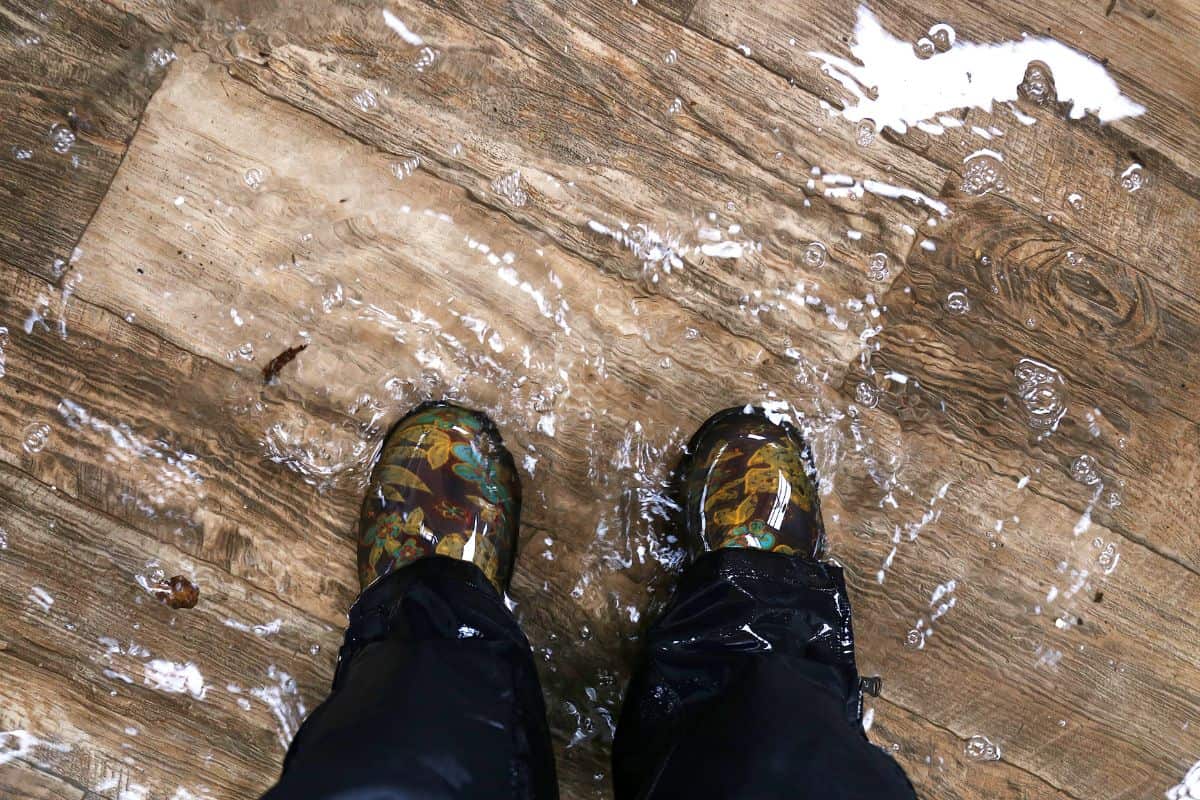
It's nearly impossible to avoid water spills in homes and offices where laminate flooring is largely used. However, when such spills are not wiped off in time, the sitting water can make the flooring swollen or warped.
Underground water leaks can also seep through. Bounciness is the inevitable result of either of these.
Uneven Floor
Where the subfloor is uneven, it would naturally cause looseness in your laminate flooring as well. It's quite easy to diagnose an uneven subfloor. Simply lay a straightedge on the floor and move it across the floor, noting areas where there is any space between the straightedge and the floor.
Damaged Floor Joists
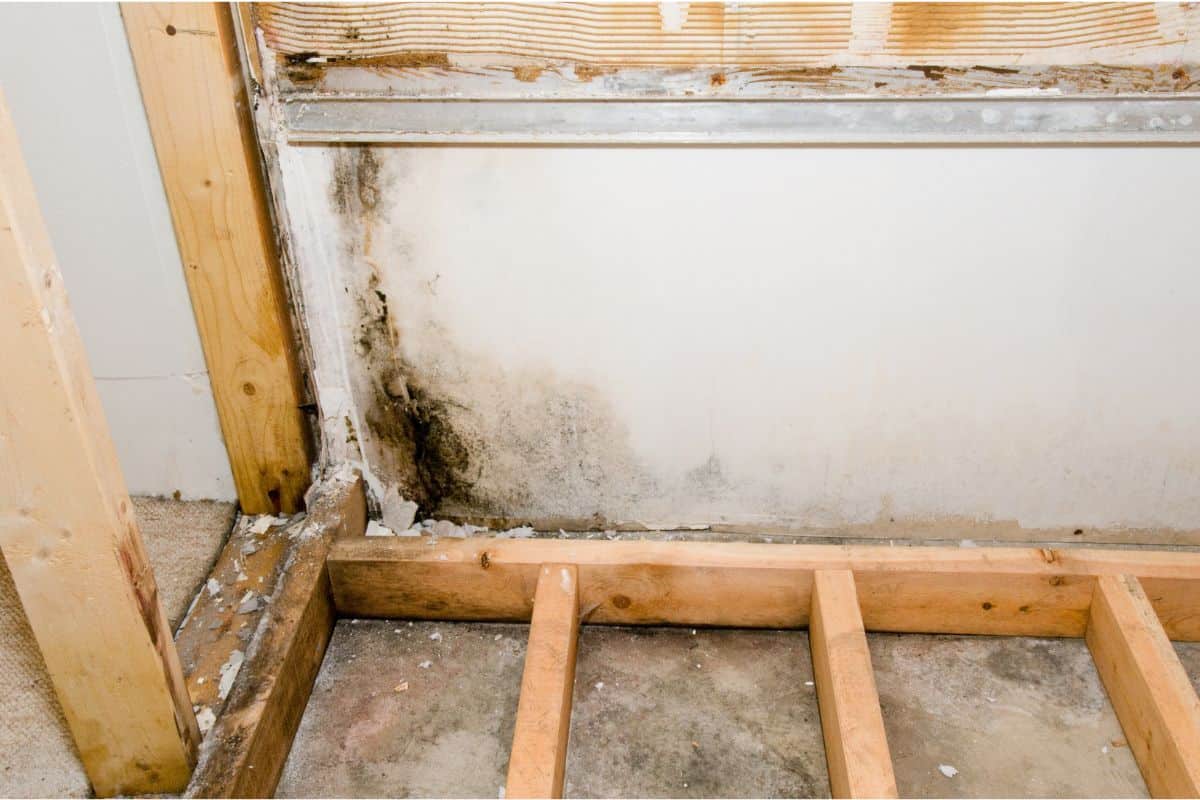
Floor joists are horizontal timber beams in a house’s structure whose purpose is to provide support to the flooring.
If the floor joists get damaged - most times as a result of a termite infestation - the subfloor is left without support and unable to withstand the normal weight and traffic the floor is regularly subjected to. This can cause bounciness in your flooring.
How Do You Fix a Laminate Floor That Bounces?
A bouncy laminate floor is not aesthetically pleasing and you understandably want to get rid of the bounce quickly. The fix for your bouncy floor depends on the cause of the bounce in the first place.
For damage caused by water, you want to cut off the root cause. There might be a leaking roof or a plumbing problem requiring repair.
If the water is seeping from the subfloor, its likely causes are leaking pipes or appliances, backed up, collapsed or generally poor drainage, cracks in your home's foundation, or clogged gutters.
Once the underlying cause of water seepage has been addressed, you can lift and relay your flooring. However, your laminate flooring might be to water damaged to be salvaged and in such instances will need to be replaced.
If the bounce is caused by the wrong installation, your flooring might need to be reinstalled. You want to make sure that it is done right this time around, allowing the requisite space between the flooring and the wall for any contraction or expansion when seasons change.
Even Subfloor

If your subfloor is uneven, you would need to even it out. The method required depends on the kind of unevenness you're dealing with.
If the gaps between the straightedge and the floor are irregular dips of less than a half inch in depth and 4 inches in width, then you can cover the subfloor with sheets of plywood to flatten it.
Where the dips are wider than 4 inches and/or deeper than half an inch, you can use a floor-leveling compound to level the floor. If the dip is however concentrated on one area of the subfloor, you might have a damaged floor joist in need of repair.
Why Does My Laminate Floor Feel Spongy?
The same causes of a bouncy floor can cause sponginess - water damage, wrong installation, or an uneven subfloor. The subfloor might also be damaged and not just uneven. Another reason for sponginess is termite damage which has a tell-tale sign: wood dust around the spongy spot.
As the first port of call, it's important to pinpoint the exact cause. Termite-damaged laminate floors cannot be salvaged and have to be replaced. The extent of damage occasioned by water, where that is present, will determine whether or not you have to replace the flooring.
If water and termite damage are absent and you're certain the installation was properly done, you might want to consider calling in an expert to measure the structural integrity of your subfloor.
Will Bouncy Laminate Settle Overtime?

Newly installed flooring could take a few months to settle and have some steadiness. However if several months after installing your laminate flooring, it still retains some bounce, there is an underlying issue requiring your attention.
Do all Floating Floors Bounce?
Laminate flooring is typically installed as a floating floor. Floating floors, unlike fixed floors, are not nailed or glued to the subfloor. Hence the term "floating." Rather, they are made in such a way that each flooring board locks onto the other to create a tight bond.
Because of their floating nature, it's easy to assume that there should be a natural space between the flooring and the subfloor that could cause a bounce.
This is however not so. Good quality and well-installed floating floors are in fact quite sturdy and feel solid underfoot.
Why Is My Laminate Floor Wavy?
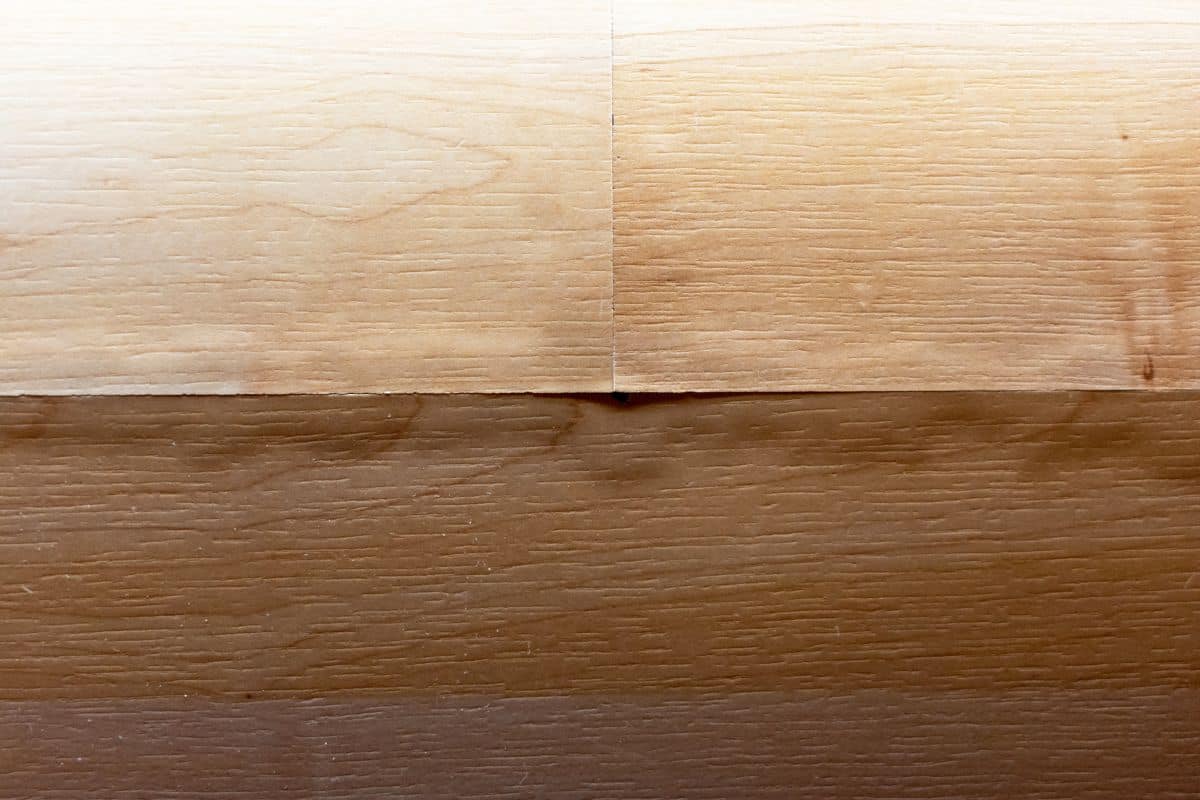
The most likely reason your laminate floor is wavy and uneven after installation is the most obvious: it was not properly laid.
However, if the waves are a new development, it’s likely a result of an expansion in the flooring due to a rise in humidity. This would only happen if there was no expansion allowance around the flooring’s perimeter during installation.
A re-install of the affected flooring boards or a complete reinstallation is sadly your only go-to in such instances.
Why Is My Laminate Floor Buckling?
Your laminate flooring is buckling if the edges of the flooring boards are lifting into a ridge-like shape. Laminate floor buckling is caused by either moisture or changes in temperature.
If you have frequent spills that are left to stay on for too long or there is a water leakage problem in your home or office, your laminate floor is likely buckling due to moisture damage.
However, if there is a noticeable increase in temperature and expansion gaps were not considered at the time of installing the flooring, then that’s the likely cause of the buckling.
To Sum Up
Your laminate flooring should not bounce, especially months after installation. If your laminate floor is bouncy, you might be dealing with a bad installation, water damage, an uneven or damaged subfloor, or a damaged floor joist.
If your floor joist or subfloor is damaged, the bounce in your flooring might be the least of your worries as those are core structural issues.
To read more about floors, here are some articles you should read:

